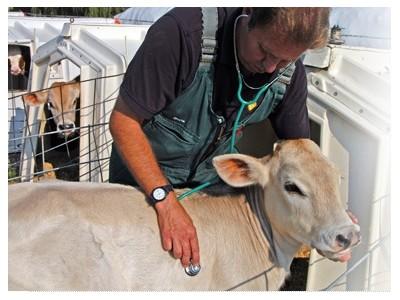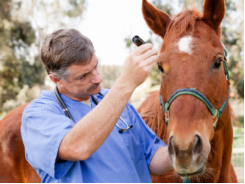Cow Health: Bovine viral diarrhoea virus

Bovine viral diarrhoea virus (BVD) may affect up to 60% dairy cows and 90% herds
BVD limits production, causes reproductive losses and may lead to death
Estimated annual cost of BVD infection to the NZ dairy industry is more than NZ$23M, or NZ$11,334/herd
Effects include diarrhoea, impaired reproductive performance, reduced immune function, mucosal disease
Control includes removing infected animals, vaccination, closed herd
This disease can be transmitted vertically i.e. between generations, so management starts with the planning of breeding, only to breed, especially replacements, from cows in good health.
The BVD virus can cross the placenta to the foetus so an infected dam will produce an infected calf. The health status of all cows should be considered in herds where BVD has been found or suspected. An added complication is that any cow or heifer with a new infection during the first 150 days of pregnancy will produce a calf with an immune system tolerant of the virus. It will be persistently infected, ill thrifty and secrete viral particles, so it is a significant source of infection to other naive animals. Infected heifers that survive long enough to calve have been shown to have lower rates of growth, produce only half the expected milk in the first lactation, suffer multiple other infections and have a shorter lifespan.
The virus is transmitted via many body fluids so horizontal transmission to naive herd mates is a risk especially when animals from different sources are comingled, as happens when calves and heifers are pooled from different farms in commercial rearing enterprises.
Management of BVD requires good biosecurity practices and a robust herd health record system. Bulk milk can be screened for presence of the virus or antigens to indicate relative risk in a herd whilst individual animal tests are valuable in identifying carriers. For problem herds, vaccines are available.
Good agricultural practices for animal health must include:
- Manage the herd to resist disease
- Prevent entry of disease onto the farm
- Isolate sick animals
- Have an effective herd health management programme in place
- Practice good hygiene and pest control
- Use all chemicals and veterinary medicines as prescribed
- Train people appropriately.
BVD has become endemic in many cattle populations but it can be managed successfully. In Scandinavia and the north of Scotland total eradication campaigns are underway with some success. For the individual New Zealand farm, having a closed herd policy, screening the milk vat annually, only accepting animals tested free of the virus on to the farm (including bulls) and home-rearing all replacement stock are essential components of a control strategy to remain BVD free. The run-off, where contact with other animals can never be excluded, may be the weak link in the chain.
Related news
Tools

Phối trộn thức ăn chăn nuôi

Pha dung dịch thủy canh

Định mức cho tôm ăn

Phối trộn phân bón NPK

Xác định tỷ lệ tôm sống

Chuyển đổi đơn vị phân bón

Xác định công suất sục khí

Chuyển đổi đơn vị tôm

Tính diện tích nhà kính

Tính thể tích ao




 Cow Health: Facial Eczema (FE)
Cow Health: Facial Eczema (FE)  Keep Your Horses Hydrated and Their Waterer Clean
Keep Your Horses Hydrated and Their Waterer Clean